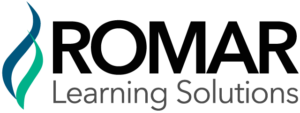
COVID-19 has changed the way we work. Initially, we thought working from home would be temporary. However, as the virus continues to spread, it has become apparent that working from home is here to stay for the foreseeable future. Many organizations have, perhaps unexpectedly, discovered positive benefits to having remote workers. Many have seen an increase in productivity and may realize an economic benefit from the decreased overhead of a physical office. Workers also are recognizing benefits of working remotely—more time with family, comfortable surroundings, flexible schedules, and no commute. Negatively, however, workers have lost the comradery of an office environment, spend long workdays in front of a screen, participate in endless webinars and calls, and miss out on spontaneous work- or project-related conversations.
As a leader how do you approach this new work dynamic? You no longer have the luxury of seeing your direct reports in action and providing coaching in the moment. One novel approach is an Outcomes-Based Organization (OBO)—pronounced like “oboe.” This approach to leading a team shifts the focus of day-to-day management from activity to results or outcomes. Before you might have monitored how many hours direct reports worked or how many sales calls they made. In an OBO, you focus instead on the outcomes direct reports produce as the measurement of work.
What Is an OBO Culture?
In a typical organization, leaders monitor activity—actions that lead to positive outcomes. This approach, while having merit, doesn’t work in a situation where most of your workers are remote. Some resistant leaders will try to cling to an activity-based organization, which ultimately fails because requiring the worker to record and provide activity metrics while working remotely leads to falsification of records or, in automated systems, resentment by the direct reports. Another reason for failure is the time-consuming complexity of monitoring so much activity.
In companies that have developed OBO cultures, leaders monitor direct reports’ required output rather than actual activity. For example, in the current environment, all the salespeople in a call center now work from home. In a traditional workplace, the number of sales calls the salesperson made would be one of the key metrics. In an OBO organization, the sales metrics might shift to actual sales made or performance against a sales objective.
An OBO organization doesn’t eliminate accountability; quite the opposite is true. In an OBO, direct reports must be held accountable for their respective outcomes. A well-run OBO includes clearly defined expectations and outcomes for which direct reports are accountable. How they get to those results is their decision. OBO leaders give direct reports the flexibility to work on their own schedules in ways they like to work and allow them to apply their own expertise to accomplishing the outcomes.
Becoming an OBO Leader
Becoming an OBO leader requires a change in mindset. You may have had instant access to direct reports and now find that you need to achieve results from them at a distance. This change in mindset requires a new approach to leading:
1. Alignment
A good leader communicates clear alignment on expectations and outcomes. In an OBO culture, it’s imperative that direct reports clearly understand their expectations, what results they are accountable for delivering, and when they need to deliver them.
2. Flexibility
OBO leaders allow direct reports to set their own hours, work style, and approach to the work. If a direct report is a night owl who prefers to work at 2:00 AM, that’s okay if the direct report accomplishes the outcomes. Where direct reports work is also their decision as is their approach to how they do the work. This gives direct reports more control over their work and allows them to be creative.
3. Supportiveness
Good leaders have always provided development and resources, but in an OBO culture, these become two of the main focuses of the leader. Day-to-day contact with direct reports should focus on ensuring they have the resources, skills, and knowledge they need to accomplish the outcomes. Remote coaching conversations are the norm!
4. Accountability
An OBO culture holds the direct report accountable for outcomes, not activity. Leaders in an OBO culture routinely discuss how they can help and support the direct report to achieve the agreed-upon outcomes rather than monitoring activity or getting updates on activities. Commonly, the leader holds the direct report accountable for completing a quality outcome on time and within budget.
Summary
Creating and leading a culture that focuses on outcomes may be unsettling and challenging for leaders. However, as we enter the era of remote working, this approach complements the new environment. Changing your mindset to reflect the remote workforce by aligning on expectations and outcomes, being flexible with how direct reports accomplish those outcomes, and supporting them with resources and development create a positive work environment that sets direct reports up for success. True accountability—focused on outcomes rather than activity—is critical to this new mindset. COVID has forever changed how we work; it has also changed how we lead, transforming us into leaders who focus not on activity but on achieving outcomes that drive results for the organization.




